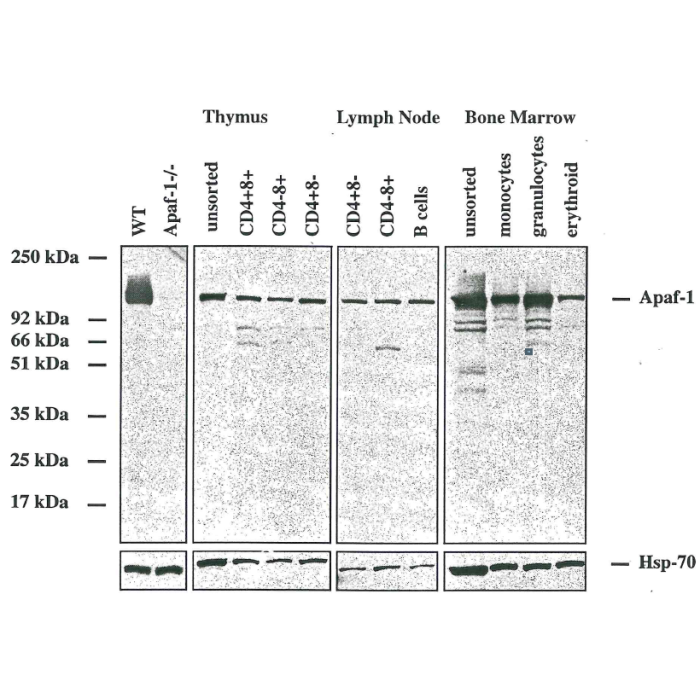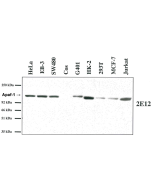Cookie Policy: This site uses cookies to improve your experience. You can find out more about our use of cookies in our Privacy Policy. By continuing to browse this site you agree to our use of cookies.
AdipoGen Life Sciences
anti-Apaf-1 (mouse/rat), mAb (13F11)

| Product Details | |
|---|---|
| Synonyms | Apoptosis Protease-activating Factor 1 |
| Product Type | Monoclonal Antibody |
| Properties | |
| Clone | 13F11 |
| Isotype | Rat IgG2aκ |
| Immunogen/Antigen | Recombinant mouse Apaf-1 (aa 1-97) containing the N-terminal CARD domain. |
| Application |
ELISA |
| Crossreactivity |
Mouse Rat |
| Specificity |
Recognizes the CARD domain of mouse and rat Apaf-1. Does not cross-react with human Apaf-1. |
| Purity | ≥95% (SDS-PAGE) |
| Purity Detail | Protein G-affinity purified (sepharose column). |
| Endotoxin Content | <0.1EU/μg purified protein (LAL test; Lonza). |
| Concentration | 1mg/ml |
| Formulation | Liquid. In PBS containing 0.02% sodium azide. |
| Isotype Negative Control | |
| Shipping and Handling | |
| Shipping | BLUE ICE |
| Short Term Storage | +4°C |
| Long Term Storage | -20°C |
| Handling Advice |
After opening, prepare aliquots and store at -20°C. Avoid freeze/thaw cycles. |
| Use/Stability | Stable for at least 1 year after receipt when stored at -20°C. |
| Documents | |
| MSDS |
 Download PDF Download PDF |
| Product Specification Sheet | |
| Datasheet |
 Download PDF Download PDF |
Apaf-1 is a cytoplasmic protein that forms one of the central hubs in the apoptosis regulatory network. It contains (from the N terminal) a caspase recruitment domain (CARD), an ATPase domain (NB-ARC), few short helical domains and then several copies of the WD40 repeat domain. Upon binding cytochrome c and dATP, this protein forms an oligomeric apoptosome, mediates the cytochrome c-dependent autocatalytic activation of pro-caspase-9 (Apaf-3), leading to the activation of caspase-3 and apoptosis.
- Histone deacetylase activity regulates apaf-1 and caspase 3 expression in the developing mouse retina: D.M. Wallace, et al.; Invest. Ophthalmol. Vis. Sci. 47, 2765 (2006)
- Differential Apaf-1 levels allow cytochrome c to induce apoptosis in brain tumors but not in normal neural tissues: C.E. Johnson, et al.; PNAS 104, 20820 (2007)
- Chromatin modification of Apaf-1 restricts the apoptotic pathway in mature neurons: K.M. Wright, et al.; J. Cell Biol. 179, 825 (2007)
- Inhibition of apoptosome formation by suppression of Hsp90beta phosphorylation in tyrosine kinase-induced leukemias: M. Kurokawa, et al.; Mol. Cell Biol. 28, 5494 (2008)
- Suppression of the intrinsic apoptosis pathway by synaptic activity: F. Leveille, et al.; J. Neurosci. 30, 2623 (2010)







